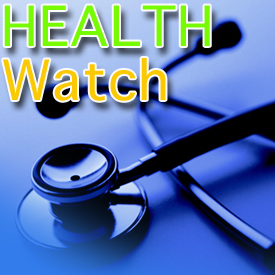

 HIV and Adolescence
HIV and AdolescenceFrom blackdoctor.org
Adolescence is a time of dramatic physical, emotional, mental and social change. The transitions that occur usher youth into the social and sexual world as independent beings. Some changes provide opportunities for positive growth experiences, but others bring new vulnerabilities.
Unfortunately, young people in the U.S. and other parts of the world are particularly vulnerable to HIV infection. One of the hallmarks of adolescence is the formation of a sexual identity, while another is the inclination for taking risks. When mixed, these characteristics can be dangerous, as reflected in the fact that half of all new HIV infections each year are estimated to occur among youth aged 13 to 24.
The Challenges of Adolescence
Adolescence is marked by a move toward independence and a challenge to family traditions. But young people do not exist in a vacuum. They are a part of social networks that can make living with HIV easier or harder.
Young people with HIV face the same challenges as their HIV-negative peers, including experimental behavior and development of the skills needed for adulthood. But youth with HIV must address these challenges while living with the stigma of their disease. Their choices regarding intimate relationships, sexual activity, and experimentation with drugs and alcohol are complicated by:
- Fears of rejection
- Side effects of HIV drugs
- Uncertain life span
- Disclosure and transmission
- The impact of loss
- Stigma
It is critical to help them understand that HIV is a chronic illness that, when successfully managed, can allow for a long and healthy life that includes marriage or long-term relationships, children and a career.
Providing Support
A key task in working with young people who have HIV is helping them adjust to their HIV status. Without proper support, adolescents have enormous difficulty staying in care and adhering to treatment. Goals of psychosocial care for youth include:
- Identifying and addressing crises, such as suicidal behavior or homelessness
- Providing access to benefits, entitlements and services
- Promoting adherence to treatment
- Assessing and expanding social support
- Supporting development of self-care and life-enhancing practices
- Identifying and treating chronic problems like depression and substance use
- Promoting skills to live independently and to make the transition to adulthood
- Reinforcing and sustaining safer sex behaviors
- Encouraging drug treatment, if needed, and supporting recovery
Adolescents strive for independence, but those with HIV are dependent on doctors, caseworkers, medicines, etc. Resentment and mixed feelings about such forced dependency are not uncommon and can lead to poor adherence or substance use. For adolescents infected at birth, there can be added challenges arising from the fact that they were not expected to survive childhood and therefore were not helped to develop the skills they would need for independent living.
For some youth, the impact of a new diagnosis is immediate. For others, it can take weeks or years for the emotional reality of the diagnosis to be absorbed. The particular traits of adolescence make it even more challenging to cope with HIV. These include a strong sense of invulnerability and immortality, being prone to peer pressure, difficulty grasping the long-term consequences of behavior, and a struggle between a sense of power and a lack of it.
For adolescents who have experienced poverty or living arrangements that brought constant threats and dangers, living with HIV is another burden in their lives. It is often perceived as proof that the world is untrustworthy.
Disclosure
Adolescents are very concerned about sharing their HIV diagnosis with others. Disclosure of one’s HIV status is complex and delicate, and each disclosure comes with consequences. Peer support groups, networks, or interactions may be helpful both before and after disclosure.
Adolescents who disclose their HIV status to peers and family have been shown to have:
- Better psychosocial outcomes
- Fewer symptoms of post-traumatic stress disorder
- Greater likelihood of disclosing to romantic partners
- More confidence with peers
- Greater resources and support from family and friends
Adherence
Mental health problems often lead to poor adherence to treatment among adolescents. Adherence rates for adolescents and young adults taking antiretroviral medications range from about 29% to 61%. Adherence is influenced greatly by:
- Disclosure issues
- Peer relationships
- Difficult social conditions
- Substance use
- Family belief system
- Psychological distress and depression
- Complications with day-to-day routines
- Family perceptions of the value of medication
- 53% believe a cure for AIDS is being withheld from the poor
- 44% believe people who take new medicines for HIV are “human guinea pigs” for the government
- 60% believe that information about AIDS is being held back from the public
Candace Hall, BDO Staff Writer
